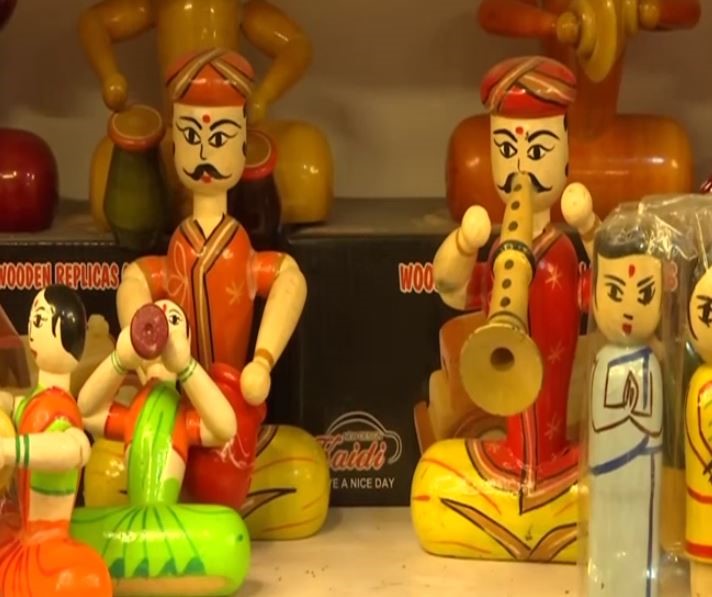Description

Disclaimer: Copyright infringement not intended.
Context
- Appreciating Prime Minister Narendra Modi’s decision to ban import of toys from China, Channapatna’s toy makers say that the government’s move has helped in increasing their profits.
About
About the toys
- Channapatna toys are a particular form of wooden toys and dolls that are manufactured in the town of Channapatna in the Ramanagara district of Karnataka state, India.
- This traditional craft is protected as a geographical indication (GI) under the World Trade Organization, administered by the Government of Karnataka.
- As a result of the popularity of these toys, Channapatna is known as the Gombegala Ooru (toy-town) of Karnataka.
- Traditionally, the work involved lacquering the wood of the Wrightia tinctoria tree, colloquially called Aale mara (ivory-wood).
Location
- Channapattana is a city and taluk headquarter in the Ramanagara district of Karnataka.
- It is a paradise for handmade lacquer wooden toys for kids.
- For centuries, the toy industry of Channapatna has provided large-scale employment to the people living here.

Gombe Habba
- The 10-day Dussehra festival, also known as Gombe Habba or Gudiya Utsav, is special for the toy makers of Channapatna as a large number of buyers come to buy the toys.
- The festival helps toymakers to earn more profits.
History
- The greater prominence of the Channapatna toys can be traced to patronage from Tipu Sultan, the historic ruler of Mysore, though these toys existed before this period historically given as gifts as part of Dusshera celebrations.
- It is known that he was an ardent admirer of arts, and in particular of woodwork.
- The art underwent dramatic changes over the years.
- Later, a man by the name of Bavas Miyan undertook the responsibility to introduce Japanese doll making techniques to improve production and reduce the effort that went into making each piece of toy.
- For nearly two centuries, ivory-wood was the main wood used in the making of these toys, though rosewood and sandalwood were also occasionally used.
Manufacturing
- The craft has diversified over time; in addition to the traditional ivory-wood, other woods—including rubber, sycamore, cedar, pine and teak—are now used as well.
- Manufacturing stages include procuring the wood, seasoning the wood, cutting the wood into the desired shapes, pruning and carving the toys, applying the colours and finally polishing the finished product.
- Vegetable dyes are used in the colouring process to ensure that the toys and dolls are safe for use by children.
Government steps that have helped
- Toymakers at Channapatna appreciated the Toy Festival which helped them in boosting sales.
- They further appreciated campaigns such as Make in India and Local for Vocal led by PM Modi.
- PM mentioned the toys of Chinnapatna in his Mann Ki Baat program, due to which people’s attention was drawn towards us leading to the increase in the sale of toys here.
- The Karnataka Handicrafts Development Corporation (KHDC) provides assistance with marketing efforts.
- The oldest and most popular manufacturing unit Bharath art and crafts help develop innovative products.
|
PRACTICE QUESTION
Q) Which of the following statements with reference to Channapatna toys is/are correct?
1. Only ivory-wood is the wood used in the making of these toys.
2. The greater prominence of the Channapatna toys can be traced to patronage from Tipu Sultan.
3. Channapattana is a city in the Ramanagara district of Karnataka.
- 1 and 2
- 2 and 3
- 1 and 3
- 1, 2 and 3
Correct Answer: 2
|

https://theprint.in/india/centres-ban-on-import-of-toys-from-china-increased-our-profits-say-channapatna-toy-makers/1553241/















